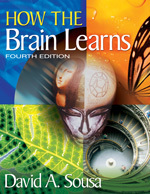- View more resources from this publisher
 Corwin Press (SAGE)
Corwin Press (SAGE)
How the brain learns

One major development since the third edition of this text is the birth of a new academic discipline. Called educational neuroscience or mind, brain, and education science, this field explores how research findings from neuroscience, education, and psychology can inform our understandings about teaching and learning, and whether they have implications for educational practice.
This new edition includes updated information on memory systems, especially the changes in working memory capacity; new research findings on how the explosion of technology may be affecting the brain; new information on brain organization and learning, and revised sections on hemispheric specialization;anew research on how learning the arts enhances cognitive processing and creativity; an expanded Resources section that includes more Internet sites selected for their reliable information on the brain; and more than 150 new updated references, most of which are primary sources for those who wish to explore the actual research studies.
Show health and safety information
Please be aware that resources have been published on the website in the form that they were originally supplied. This means that procedures reflect general practice and standards applicable at the time resources were produced and cannot be assumed to be acceptable today. Website users are fully responsible for ensuring that any activity, including practical work, which they carry out is in accordance with current regulations related to health and safety and that an appropriate risk assessment has been carried out.




